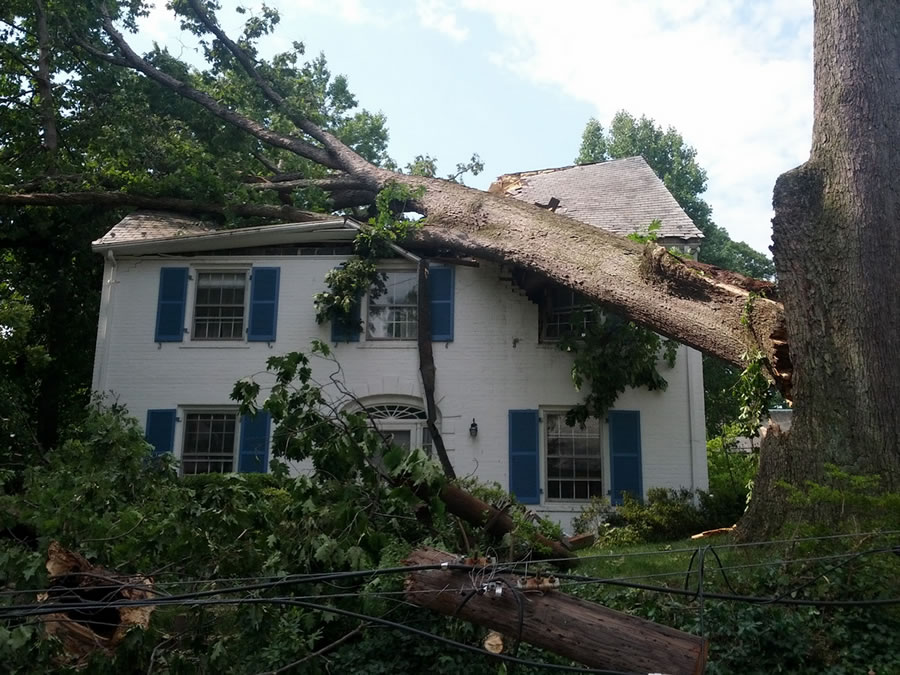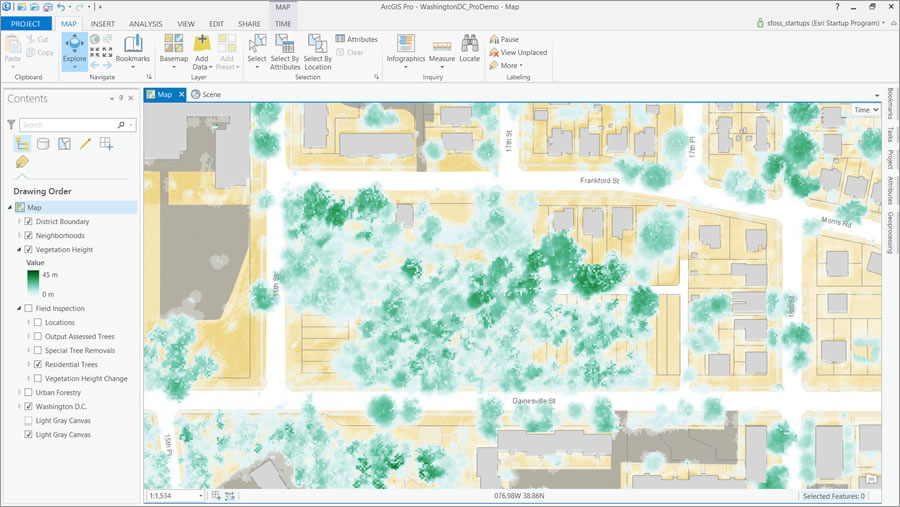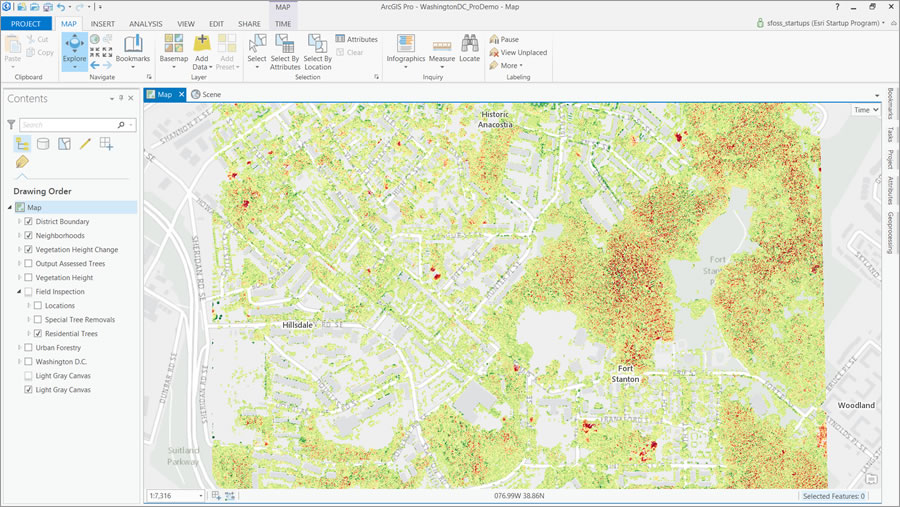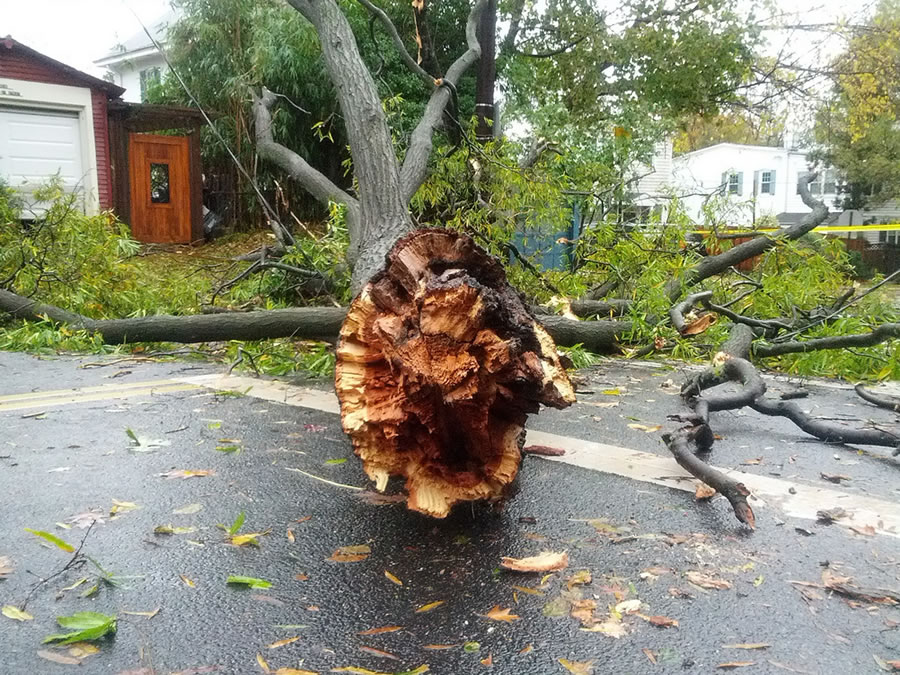
The trees that grow in our cities endure onslaughts from a surprising number of enemies, including the weather, pests, and even people. Ice storms topple them, beetles infect them, and troubled youths vandalize them. Some homeowners even go Paul Bunyan on them, chopping down trees without getting the proper permissions.
These constant assaults require that foresters and arborists, society’s civic tree stewards, take a detailed inventory and analysis of trees to better manage urban trees and ensure that they thrive and survive. That’s what arborists are doing today in Washington, DC.
By using GIS to improve its inventorying and spatial analysis methods, the Urban Forestry Administration(UFA) at the District Department of Transportation (DDOT) in Washington, DC, better protects its urban forests and enforces tree-removal penalties more accurately. The organization uses Esri software such as ArcGIS Online, Collector for ArcGIS, and ArcGIS Pro in this effort.
“Washington, DC, is known as The City of Trees. It has long recognized the importance of urban trees in creating livable communities,” said Earl Eutsler, deputy associate director at UFA. “Our team of arborists honors that legacy today as we care for these trees. By aggressively replacing street trees that require removal, our team ensures an enduring canopy.”

Taking Inventory
From 2006 to 2013, UFA used a typical personal digital assistant (PDA)-based field collection method to gather data about trees in Washington, DC. A team of 18 arborists inventoried the district’s trees using handheld PDA devices. Back at the office, information from those units had to be uploaded and manually merged into the street tree database, inviting error creep.
In 2014, UFA started to monitor the condition of DC’s urban forest in real time, using the Esri ArcGIS platform. The arborists in the field can gather information about trees (e.g., damaged limbs or signs of disease) on smartphones and tablets using the Collector for ArcGIS mobile app connected to ArcGIS Online. The data that’s collected is then added, in real time, to a map in ArcGIS Online. This system helps arborists manage street trees planted by the city and regulate the removal of privately owned trees.
For example, UFA maintains mapped data in ArcGIS Online on where permits to cut have been issued. If arborists notice freshly cut stumps in a neighborhood, they can use a mobile device to call up a map in ArcGIS Online and see whether the proper permits were obtained to cut those trees. In this way, UFA can discover the true extent of illegal tree removal in the city.
“By comparing and sharing data with ArcGIS, our team was able to more effectively discover these types of problems,” Eutsler said.
UFA also needs to know the location and dimensions of illegally removed trees in order to issue fines that are fair and equitable to residents. Although DC’s tree protection laws require a permit to remove mature trees, that doesn’t stop some property owners from revving up their chainsaws without filling out the proper paper work.

Take the case of a cluster of newly cut stumps that an arborist discovered one day in a southeast Washington, DC, neighborhood. “A quick check of the web map revealed the property owner hadn’t applied for any tree permits,” Eutsler said.
Not knowing the size of the trees removed, UFA couldn’t properly assess fines on the property owner, since penalties are based on each felled tree’s actual size. To discover the size of the removed trees, UFA used lasers and ArcGIS.
“Accurate fine [assessment] required that UFA determine the size of the trunk at 4.5 feet above the ground,” said Eutsler. “Using historical lidar imagery in ArcGIS Pro to determine tree height, we can now derive an accurate measurement of the tree’s trunk even without the stem.”
Visualizing lidar data in ultimately uncovered $100,000 in unissued fines for illegal felling of those trees in southeast Washington, DC. The district ultimately settled with the property owner on a $65,000 fine and then used the funds to plant new trees.
Location Matters When Protecting Trees
UFA uses Cityworks, a map-based asset management system, with the Esri ArcGIS platform. Cityworks accesses maps and layers from ArcGIS Online and allows UFA staff to select the data capture method best suited to their specific jobs. Consuming the same geospatial services in all the administration’s mapping applications, arborists can immediately make modifications to the city’s tree asset data. As those changes automatically merge into a common map, users can view fresh street tree inventory data on any device and perform tasks accordingly.
“For example, by providing real-time information on which trees on a block have not been inspected recently, a visiting arborist with an iOS or Android device might select Esri’s Collector for ArcGIS to update the inventory then and there,” Eutsler said. “With an accurate inventory, the same arborist can use Cityworks to schedule any necessary tree maintenance.”

Working in a real-time environment has improved UFA’s response times, even during severe storms, when fallen branches and toppled trees must be promptly removed.
Street trees are far more vulnerable to damage by humans and the environment than are right-of-way assets, such as street signs and fire hydrants. If UFA is unable to respond to problems quickly, the trees can quickly succumb due to storm damage, pests, and diseases. For instance, knowing the location of an infected American elm tree is fundamental to preventing Dutch elm disease from spreading.
“Since the beetles that spread the disease can quickly fly from tree to tree, understanding where healthy elms neighbor a diseased one allows us to proactively treat trees to prevent transmission of the killer fungus,” Eutsler said.
The Esri ArcGIS platform speeds UFA’s workflows, according to Eutsler. “We measure success based on doing more in less time,” he said.
UFA won a Special Achievement in GIS Award from Esri in 2015, and Eutsler spoke at the Esri User Conference Plenary Session about UFA’s use of ArcGIS. Watch the video.
See UFA’s collection of ArcGIS Online web maps. Read more about the fascinating history of Washington, DC, street trees in this Story Map Journal.

